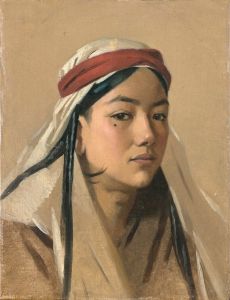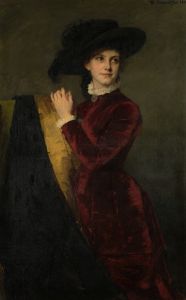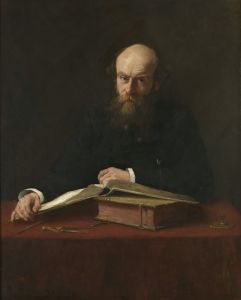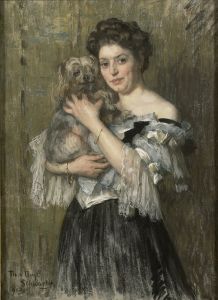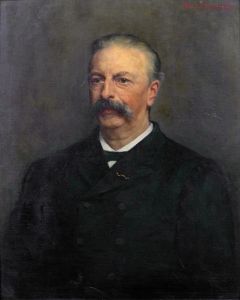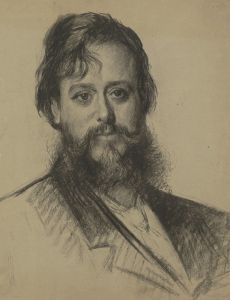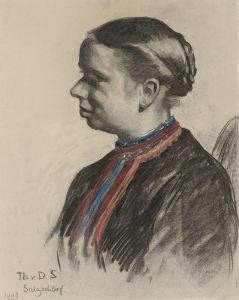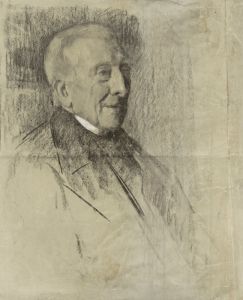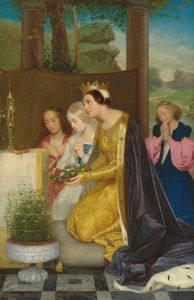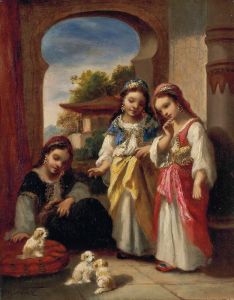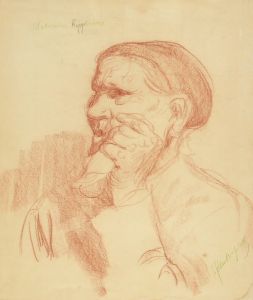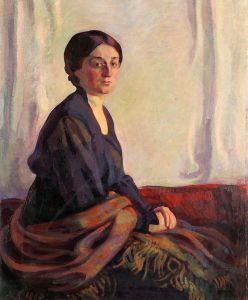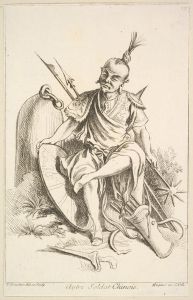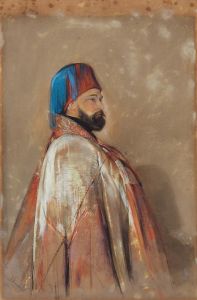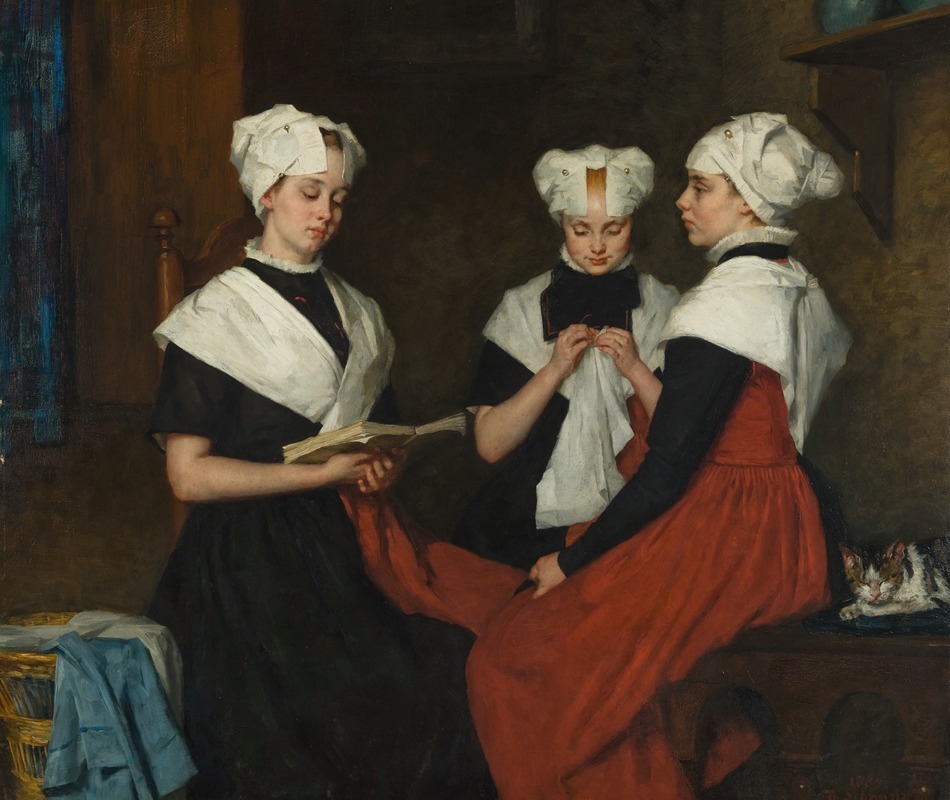
Drie burgerweesmeisjes van Amsterdam
A hand-painted replica of Thérèse Schwartze’s masterpiece Drie burgerweesmeisjes van Amsterdam, meticulously crafted by professional artists to capture the true essence of the original. Each piece is created with museum-quality canvas and rare mineral pigments, carefully painted by experienced artists with delicate brushstrokes and rich, layered colors to perfectly recreate the texture of the original artwork. Unlike machine-printed reproductions, this hand-painted version brings the painting to life, infused with the artist’s emotions and skill in every stroke. Whether for personal collection or home decoration, it instantly elevates the artistic atmosphere of any space.
Thérèse Schwartze was a prominent Dutch portrait painter known for her ability to capture the character and status of her subjects with remarkable skill. One of her notable works is "Drie burgerweesmeisjes van Amsterdam" (Three Orphan Girls from Amsterdam), which exemplifies her talent in portraying individuals with both realism and sensitivity.
The painting "Drie burgerweesmeisjes van Amsterdam" was completed in 1885. It depicts three young girls from the Burgerweeshuis, an orphanage in Amsterdam. The Burgerweeshuis was a civic orphanage that housed children who had lost their parents and was an important institution in Amsterdam during the 19th century. Schwartze's painting captures the essence of these girls, presenting them with dignity and grace despite their challenging circumstances.
In the painting, the three girls are dressed in traditional orphanage attire, which includes dark dresses with white collars and cuffs. This clothing was typical for orphans at the time and was meant to signify their status and the care provided by the institution. Schwartze's attention to detail in the depiction of their clothing and expressions highlights her commitment to realism and her ability to convey the individuality of each subject.
The composition of the painting is carefully arranged, with the three girls positioned in a way that suggests a sense of unity and companionship. Schwartze's use of light and shadow adds depth to the painting, drawing attention to the girls' faces and expressions. Their expressions are thoughtful and introspective, inviting viewers to consider their stories and the lives they lead within the orphanage.
Thérèse Schwartze was known for her ability to capture the psychological depth of her subjects, and "Drie burgerweesmeisjes van Amsterdam" is a testament to this skill. The painting not only serves as a portrait of the three girls but also as a reflection of the social conditions of the time. It provides insight into the lives of orphans in 19th-century Amsterdam and the role of institutions like the Burgerweeshuis in providing care and support.
Schwartze's work was highly regarded during her lifetime, and she received numerous commissions from wealthy patrons and institutions. Her ability to portray her subjects with empathy and precision made her one of the leading portrait painters of her era. "Drie burgerweesmeisjes van Amsterdam" is an example of her dedication to her craft and her ability to convey the humanity of her subjects.
Today, Thérèse Schwartze's paintings are appreciated for their historical and artistic significance. "Drie burgerweesmeisjes van Amsterdam" remains an important work within her oeuvre, showcasing her talent and the cultural context of the time. The painting is a valuable piece of Dutch art history, reflecting both the personal stories of the orphan girls and the broader societal themes of the 19th century.





